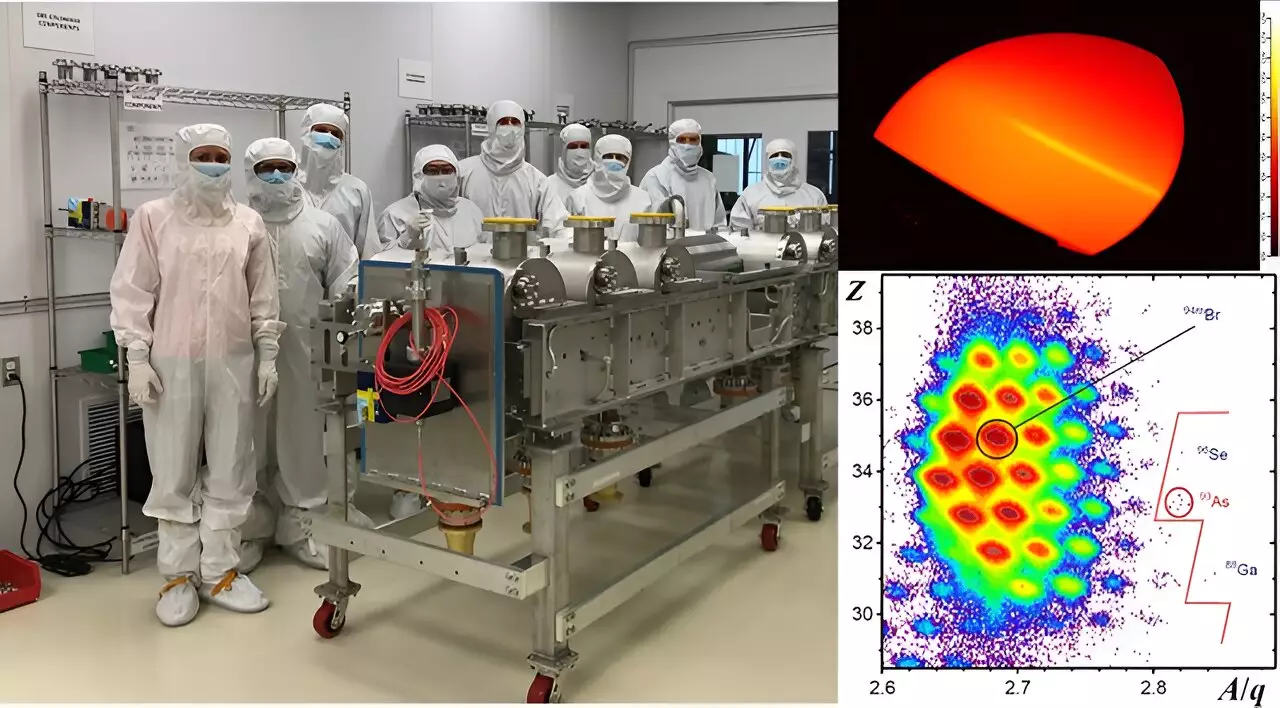Recent advancements at the Facility for Rare Isotope Beams (FRIB) mark a pivotal moment in isotope research, particularly in the realm of uranium ion acceleration. By successfully delivering a continuous beam power of 10.4 kilowatts, the team has established a significant benchmark for future experiments, underscoring uranium’s essential role in the study of rare isotopes. With groundwater research influencing a myriad of scientific agendas, uranium’s unique ability to yield diverse isotopes post-fragmentation or fission becomes indispensable. As highlighted by the National Academy of Sciences and the Nuclear Science Advisory Committee, over half of the top-priority scientific programs necessitate uranium as a primary beam source, illustrating its critical importance in ongoing research endeavors.
The FRIB’s capability to accelerate uranium ions hinges on several cutting-edge technologies and engineering breakthroughs. The newly installed superconducting linear accelerator, featuring 324 resonators distributed across 46 cryomodules, plays a crucial role in achieving this high-output acceleration. In concert with a novel liquid-lithium stripper and advanced production techniques utilized in the Electron Cyclotron Resonance (ECR) ion source, FRIB has been able to push the boundaries of what is possible in isotope generation. Researchers also pioneered innovative methods to collaborate multiple charge states of uranium, all of which contributed to the record-setting beam power.
This technical prowess not only facilitates unprecedented uranium ion acceleration but also lays the groundwork for future explorations into heavier isotopes, expanding the scientific community’s reach into previously uncharted territories of nuclear research.
The immediate benefits of successfully operating the high-power uranium beam were vividly demonstrated within the initial hours of testing. Scientists were able to produce and identify three novel isotopes: gallium-88, arsenic-93, and selenium-96. This success story reiterates the collaborative nature of modern scientific inquiry, with contributions from researchers spanning the United States, Japan, and South Korea. The identification of these isotopes, previously unknown to the scientific community, heralds not only a victory for the FRIB team but also opens expansive possibilities for further research applications in fields ranging from nuclear physics to medical imaging and radiopharmaceuticals.
The significance of establishing a high-power uranium beam extends far beyond immediate outcomes. This achievement is expected to drive innovation and inspire new experimental methodologies in isotope production. By bridging existing gaps in nuclear science and engineering, FRIB has positioned itself as a cornerstone facility for exploring rare isotopes, which can profoundly influence both theoretical and applied research. As the scientific community capitalizes on this breakthrough, the potential for groundbreaking discoveries in nuclear structure, reactivity, and other unexplored areas remains promising.
The recent accomplishments at FRIB emphasize the dynamic interplay between advanced technology and significant scientific inquiry, embodying the essence of modern nuclear research. As scientists continue to leverage these innovations, the horizon for isotope research looks brighter than ever.


Leave a Reply